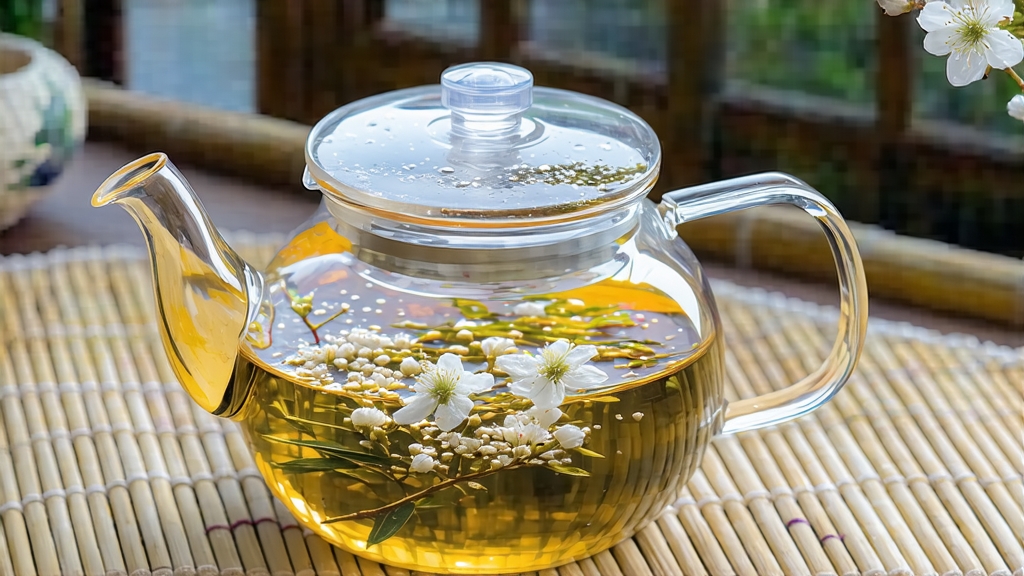
Among the six great families of Chinese tea, white tea is the least theatrical yet the most elusive, and within that quiet clan Fuding Silver Needle (Bai Hao Yin Zhen) reigns as the uncrowned prince. International drinkers often meet white tea through bagged blends or fruity “white” mélanges, but the original Silver Needle remains a niche treasure even inside China. To understand it is to step into a world where time is measured not in minutes but in lunar phases, where the scent of fresh-cut alfalfa can suddenly transport you to a Song-dynasty court.
-
A shoot that rode the maritime Silk Road
Fuding lies on the northeastern lip of Fujian’s rugged coast; its granite hills trap sea fog that rolls in at dawn, wrapping the tea gardens in a cool, diffused light. Local gazetteers from the Qianlong era (1736-1795) already list “white down tea” as tribute, yet legend pushes the story back to the early Song period, when a county magistrate presented “buds silvered like swallow down” to Emperor Huizong, himself a tea-cataloguing connoisseur. The same buds later travelled south to Guangzhou’s foreign warehouses, stowed in camphor-wood chests aboard clippers bound for Amsterdam and London, where 18th-century auction catalogues mysteriously called them “Pekoe Souchong Imperial,” betraying European confusion between white and smoked black teas. Only in the late 19th century, when Fuding’s export firms refined sorting screens and built dedicated withering lofts, did Silver Needle emerge as a distinct, high-value grade. -
The taxonomy: why “Needle” and why “Silver”
Chinese commercial grading recognises three primary styles of white tea—Silver Needle, White Peony (Bai Mu Dan), and Shou Mei (Longevity Eyebrow). Silver Needle is the apex because it is plucked only from the unopened, single-tip buds of the Da Bai (Big White) cultivar. Each bud is a miniature battery of amino acids, catechins and fuzzy trichomes; the trichomes are the “silver” that refracts light like frost. One kilogram of finished Silver Needle contains roughly thirty thousand buds, all picked within a forty-eight-hour window in late March, before the Qingming festival when the first spring thunder is said to awaken leaf enzymes. -
Craft: the art of doing almost nothing
Unlike green tea that is pan-fired or oolong that is tossed and bruised, Silver Needle is allowed to retire gracefully. The classic Fuding protocol has only two steps: withering and drying. Fresh buds are spread on bamboo trays stacked in pine-framed lofts whose louvered walls open to mountain breezes. For thirty-six to forty-eight hours the buds lose moisture slowly; oxidation proceeds at a glacial pace, never exceeding 10 %, yet enough to convert grassy aldehydes into sweeter lactones. When the bud stem snaps cleanly at 8 % residual moisture, workers transfer the tea to charcoal-waisted ovens where a 40 °C draft finishes the cure. The entire cycle is monitored by nose rather than clock: the scent must drift from cucumber to fresh melon to, finally, the elusive “milk-chestnut” aroma that signals readiness. Modern facilities replicate the climate with dehumidified tunnels, but connoisseurs swear that moonlit withering—trays set under open skylights—imbues a cool, silvery note impossible to obtain under electric light. -
Chemistry in slow motion
Because enzyme activity is arrested so gently, Silver Needle retains a rare profile: the highest theanine level among white teas (2.5–3 %), a moderate caffeine punch (3.5 %), and a unique trinity of volatiles—linalool, geraniol and hotrienol—that create its honey-lifted bouquet. Storage continues the transformation; under dry, oxygen-poor conditions the tea will darken from platinum to antique gold over decades, developing a medicinal camphor-sweet character prized by Guangdong collectors who compare aged white tea to aged Riesling. -
Brewing: the quiet theatre
Silver Needle demands restraint. A 150 ml gaiwan or tall glass pot is ideal; use 3 g of buds (about a heaped tablespoon) and 80 °C water. First steep: 45 seconds, barely enough to tint the